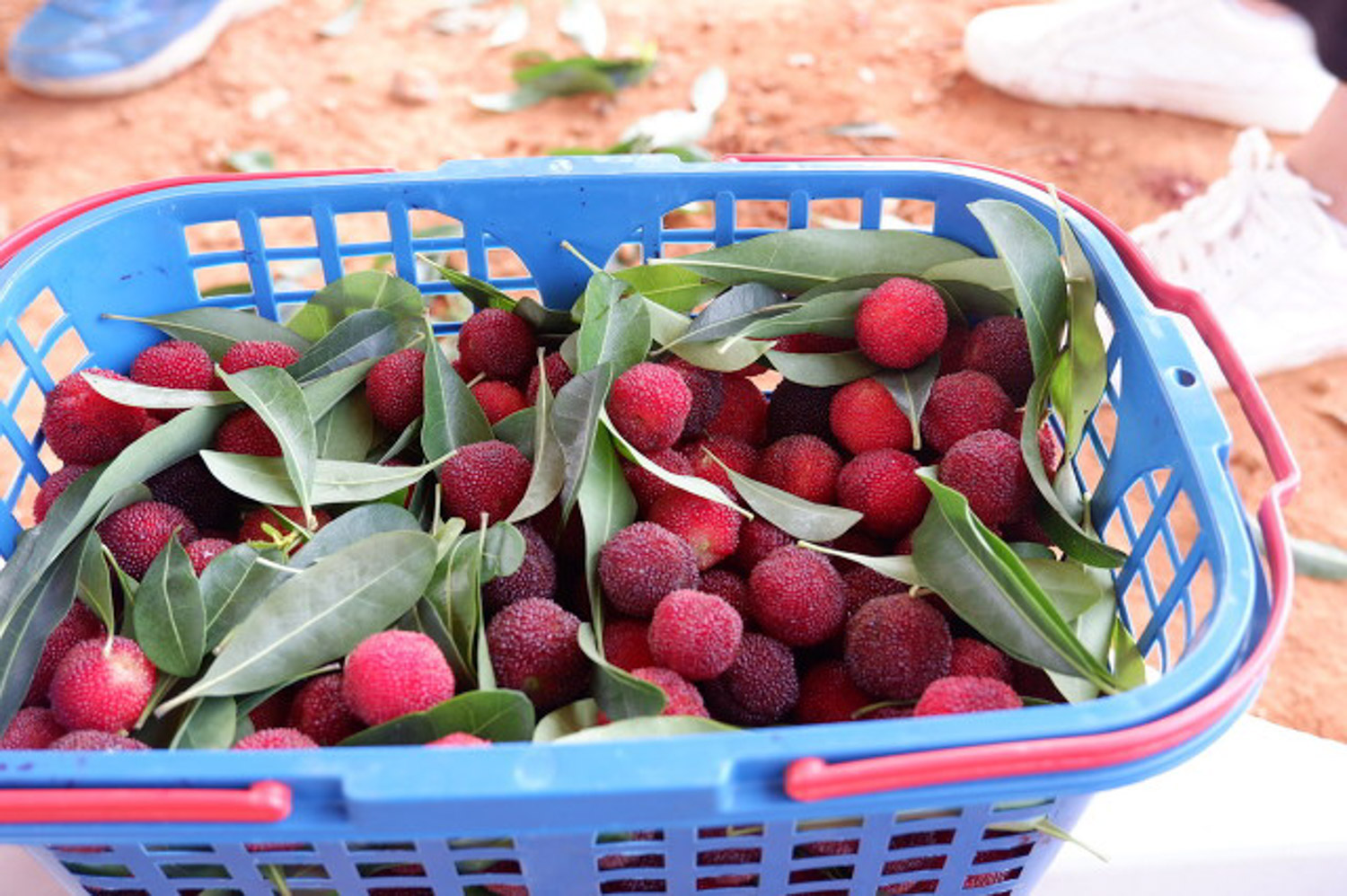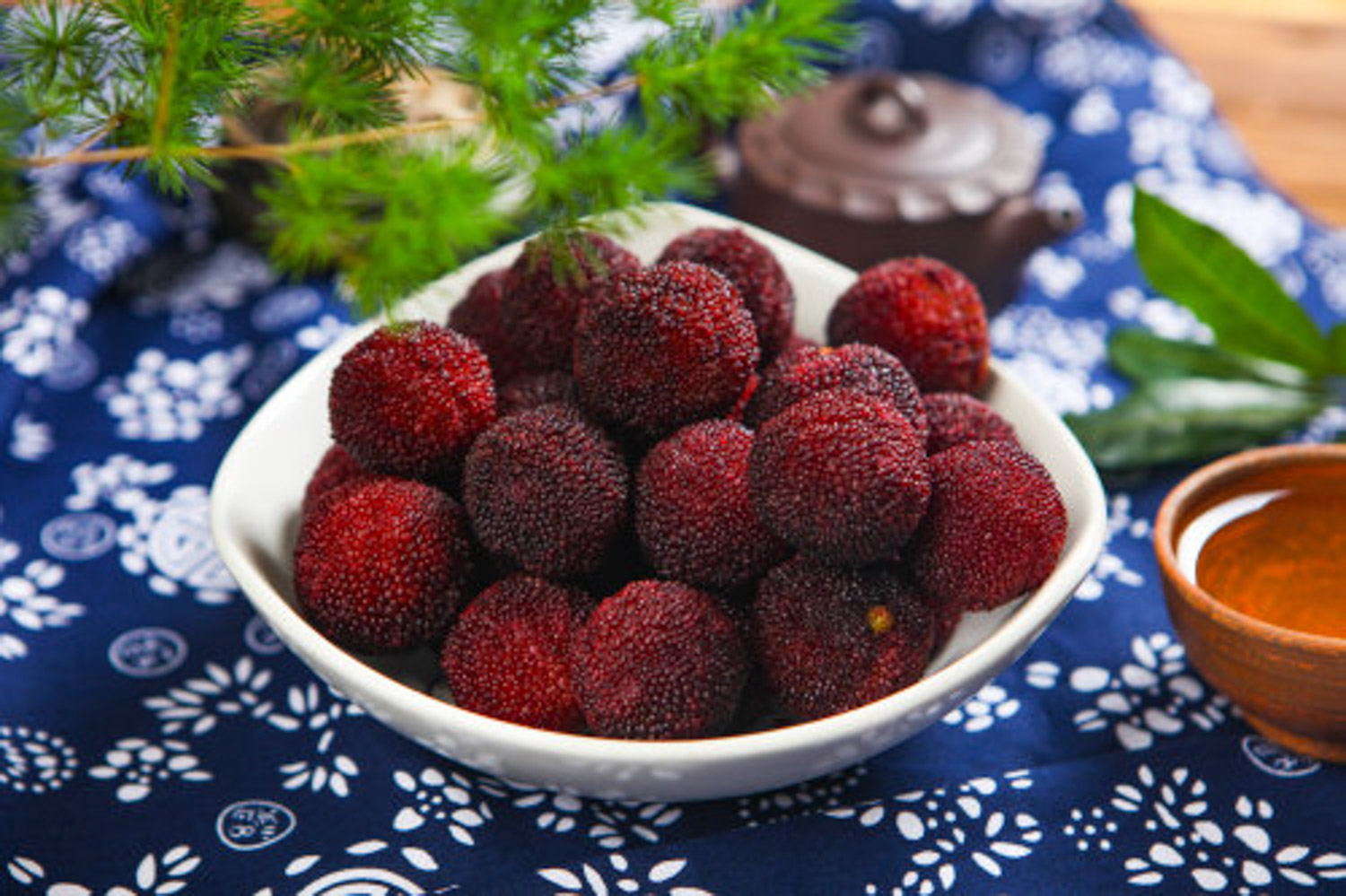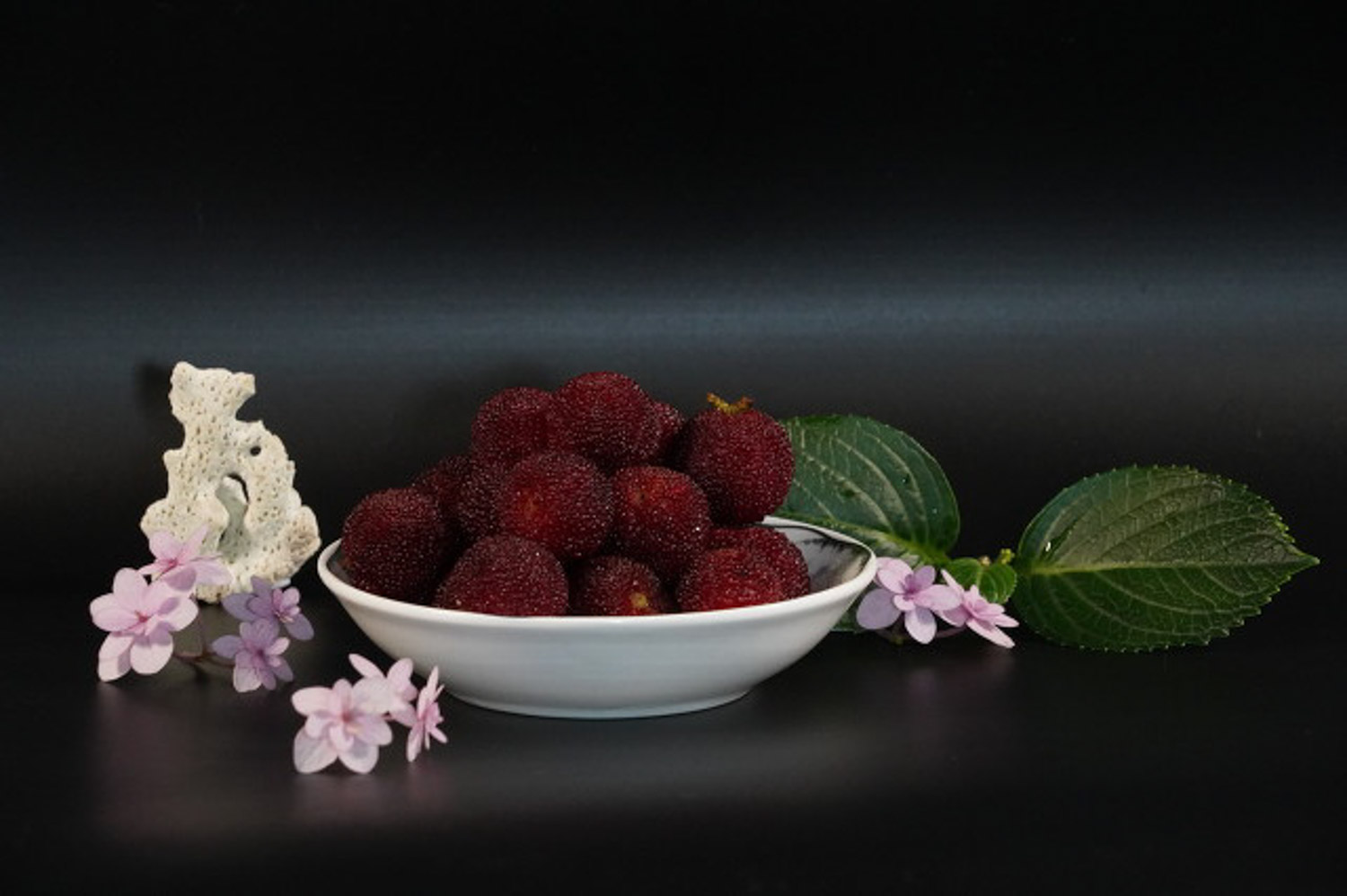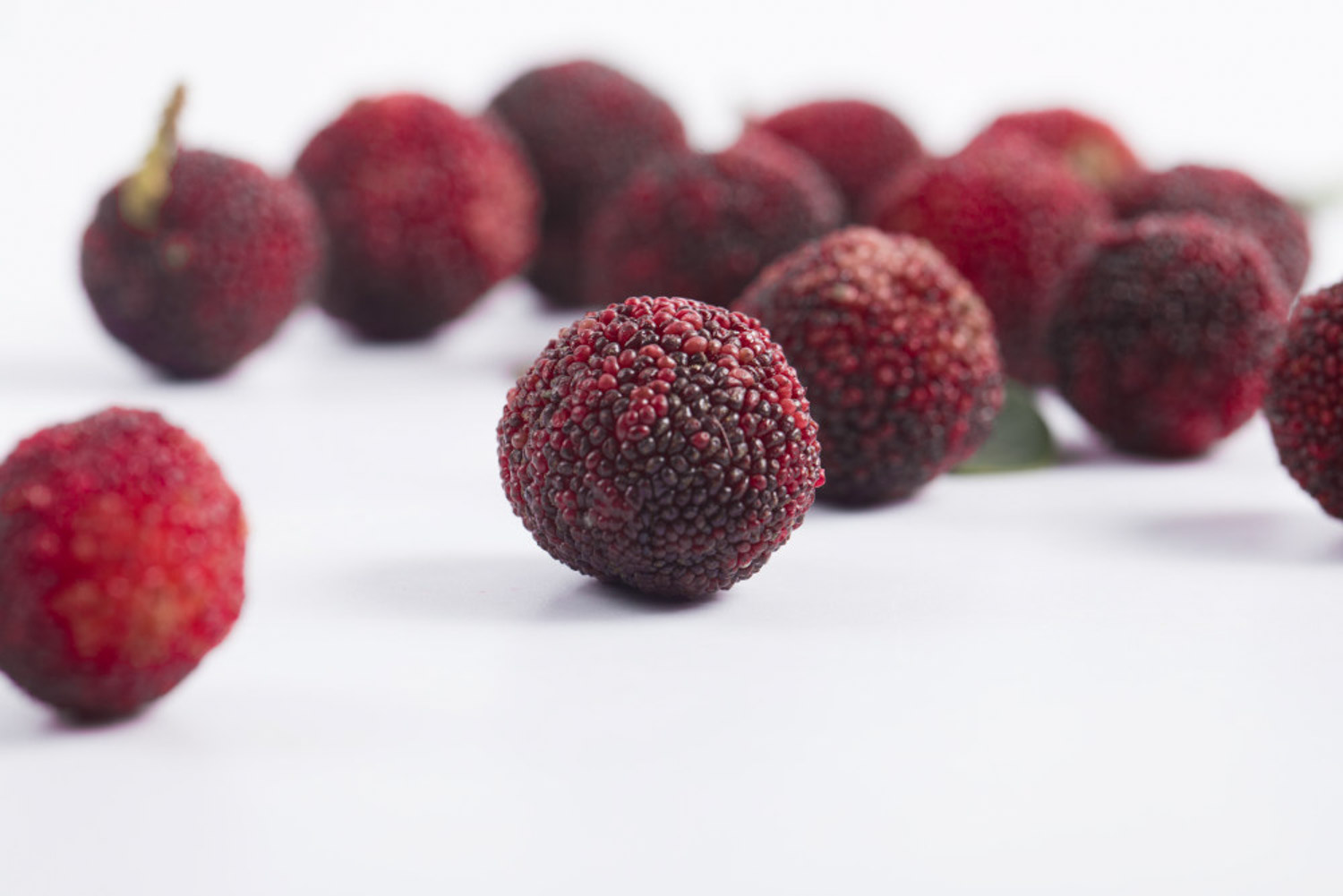Water chestnut and Myrica rubra
this species is the most widely distributed and the largest planting area in China. It is native to Lanxi, Yuyao, Cixi and Xianju in Zhejiang Province. It is the main variety in China at present. In 1984, the canned sugar water made of this variety won the world tourism food golden laurel leaf award and the national silver award. The red bayberry of water chestnut is about to mature in late June every year. The fruit is of excellent quality and purple black. The pulp and core are easy to separate and easy to eat. It is reported that this kind of red bayberry can be used for fresh and anti-cancer
Late rice Bayberry
late rice Myrica rubra has been cultivated for more than 140 years. It is one of the best late rice varieties at present. It is native to Gaoxie, Zhoushan, Zhejiang Province. Late rice bayberry ripens in early July. Compared with other varieties, it has strong fruit aroma. It is an excellent variety for fresh food and processing. This variety has developed roots, is resistant to barren soil environment and has high yield. However, the disease resistance is weak, so strict quarantine is required before planting, and attention should be paid to disease and insect prevention during planting
Dongkui red bayberry
also known as giant plum, it has the largest fruit type of Myrica rubra. It is native to Huangyan and Linhai Xianju in Zhejiang Province and generally matures in early July. The fruit is purplish red, sweet and sour, palatable and of high quality. Dongkui Myrica rubra grows very well, with sparse but strong branches. Therefore, it has strong wind resistance, high and stable yield, and is suitable for fresh food

Ding Aomei it is native to Chashan, Zhejiang Province. It usually matures in late June. The fruit is purplish red and has a long fruit stalk. One prominent feature is that the fruit pedicle has green tumor like protrusion. This kind of fruit is of high quality and can be stored and transported if picked with a stalk
Early shepherd's purse plum
this is a real variant of water chestnut. It matures one week to two weeks earlier than water chestnut Myrica rubra, which can significantly advance the supply period of Myrica rubra. It is a successful selection of early maturing varieties. The fruit character is similar to that of water chestnut, which is purplish red. The fruit type is significantly larger than that of "wild black" bayberry in the same period
Anhai hard silk red bayberry
it is native to Anhai, Fujian Province. The fruit of Anhai hard silk Myrica rubra is round and spherical, the mature fruit is purple black, the flesh column is round and blunt, and there are green tumor like protrusions on the fruit pedicle. Anhai hard silk red bayberry tastes rough and hard and is very resistant to storage and transportation. Therefore, this variety is common in foreign fruit markets. It is a rare variety suitable for long-distance transportation
Linhai zaodamei
fruit, as its name suggests, is a large fruit variety with relatively early maturity. It usually matures in mid June and has better quality. The flesh of this variety is hard and resistant to storage and transportation. The fruit can still maintain its original color after being stored for a whole day after harvest, so it has great development potential





 jackfruit
jackfruit snake plant
snake plant hibiscus
hibiscus hydrangea
hydrangea lavender
lavender Green roses climb al...
Green roses climb al... If you don't pay att...
If you don't pay att... Management of four g...
Management of four g...



































